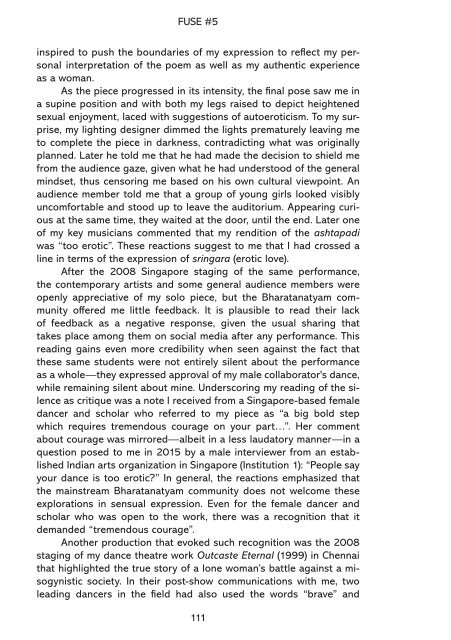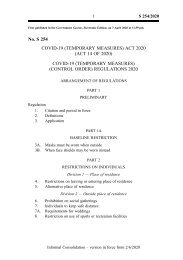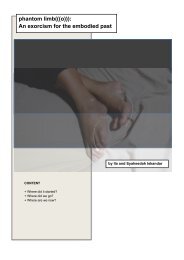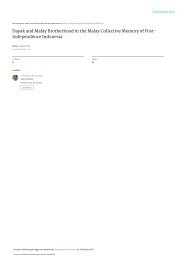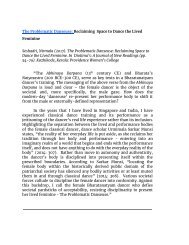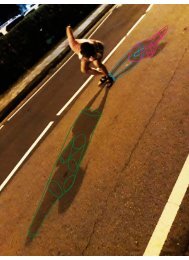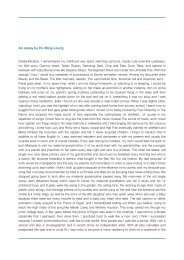FUSE#5
This edition of FUSE consists of articles contributed by artists who participated in Dance Nucleus' programmes in 2020.
This edition of FUSE consists of articles contributed by artists who participated in Dance Nucleus' programmes in 2020.
You also want an ePaper? Increase the reach of your titles
YUMPU automatically turns print PDFs into web optimized ePapers that Google loves.
The Problematic Danseuse<br />
“courageous attempt”. Both dancers seemed to acknowledge that<br />
works that test boundaries and challenge the status quo are up against<br />
hegemonic forces. Censorship of the Chennai performance began with<br />
the requirement from the authorities that we amend the script in parts.<br />
Then came the instruction from representatives of the government-run<br />
Museum Theatre (our performance venue) who had attended the stage<br />
rehearsal, to cut out the final pose of one sequence. This seduction<br />
scene had two characters, male and female, lying horizontal together<br />
on stage, the female protagonist (myself) suggestively placing her<br />
lower leg over his before the lights are dimmed, to suggest triumph.<br />
Dance critic Rupa Srikanth’s review that appeared in the leading<br />
mainstream newspaper The Hindu emphasizes the expectations of<br />
“dignity” that are placed on a Bharatanatyam dancer. Srikanth writes:<br />
Strong words work well in theatre, but the stylization in dance<br />
presupposes a certain measure of restraint… The graphic detailing of<br />
the sexual encounters left nothing to imagination; such scenes actually<br />
bring down art to its lowest denominator… It must be mentioned here<br />
that the square stance that Nirmala adopted in her soliloquy, Odissi<br />
chauka 9 -style, also did not do her dignified dance any credit (2008).<br />
Irigaray’s emphasis—on altering the feminine style “as an excess<br />
that exceeds common sense”, rather than reproducing or limiting its<br />
expression within the parameters of masculine discourse (Lehtinen<br />
2014: 78), becomes pertinent here. It lends tangibility to the existence<br />
of strict boundaries in Bharatanatyam, evident through the praise I received<br />
for my “courage” as well in Srikanth’s writing which reflects the<br />
imposition of self-control, the denial of freedom for sexual expression<br />
and ultimately the demand that the Bharatanatyam dancer reflect a<br />
level of purity that invokes caste-based stratifications 10 .<br />
The existence of Bharatanatyam rests, after all, on the expunging<br />
of the hereditary Devadasi11 dancer as a result of “a female sexuality<br />
that was exercised outside the acceptable borders of middle class<br />
and upper caste womanhood” 12 (Hubel 2005: 133). Sociologist Amrit<br />
Srinivasan’s seminal paper The Hindu Temple-Dancer: Prostitute or<br />
Nun? describes the Devadasi as a “good and holy creature”, now “corrupted”<br />
and to be replaced. The revivalists (E. Krishna Iyer, Rukmini<br />
Devi Arundale), whose role it was to return the art form to its “pristine<br />
glory”, operated within notions of “past purity” and “present sin”, in<br />
weeding out the “profane” aspects of the “sacred” dance form (1983:<br />
90, 95–96). Various aspects of the Devadasi’s dance form Sadir are<br />
said to have been discarded in its purification/sanitization. Songs or<br />
parts of songs that were considered overtly erotic were erased from the<br />
repertoire (Allen 1997: 225). Rati-mudras (sexual hand gestures) denoting<br />
various postures in sexual union that are described in medieval<br />
112


